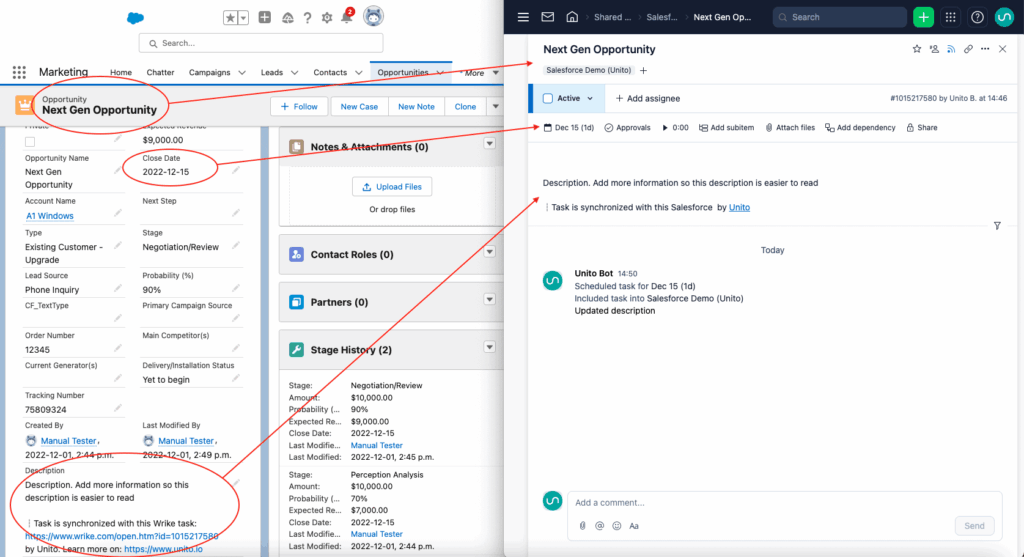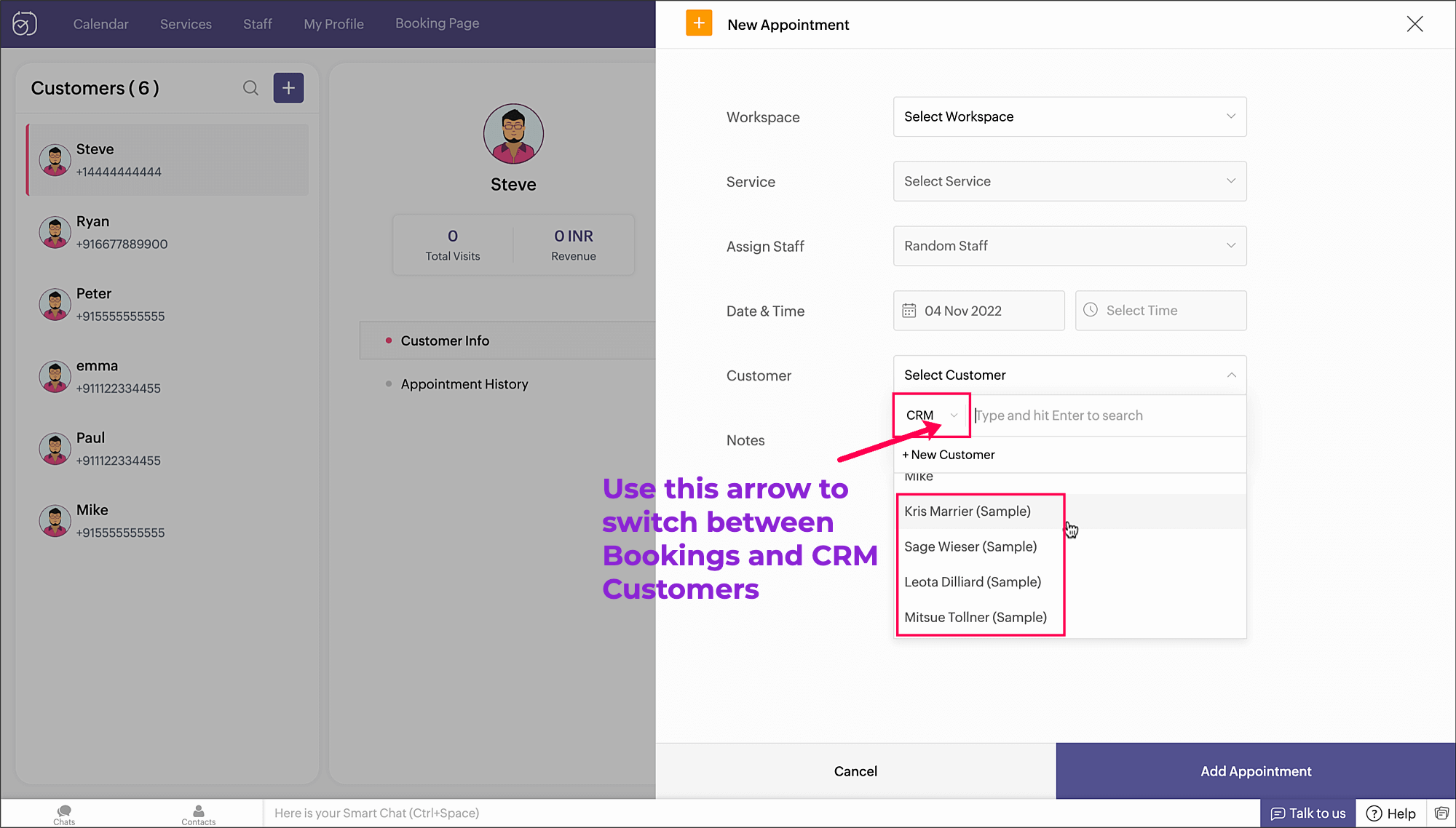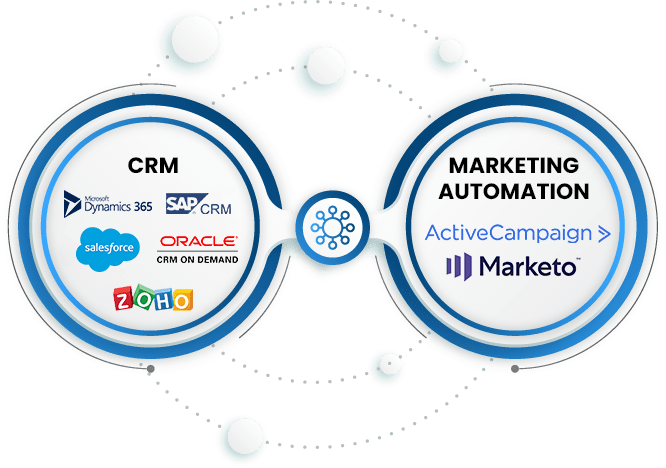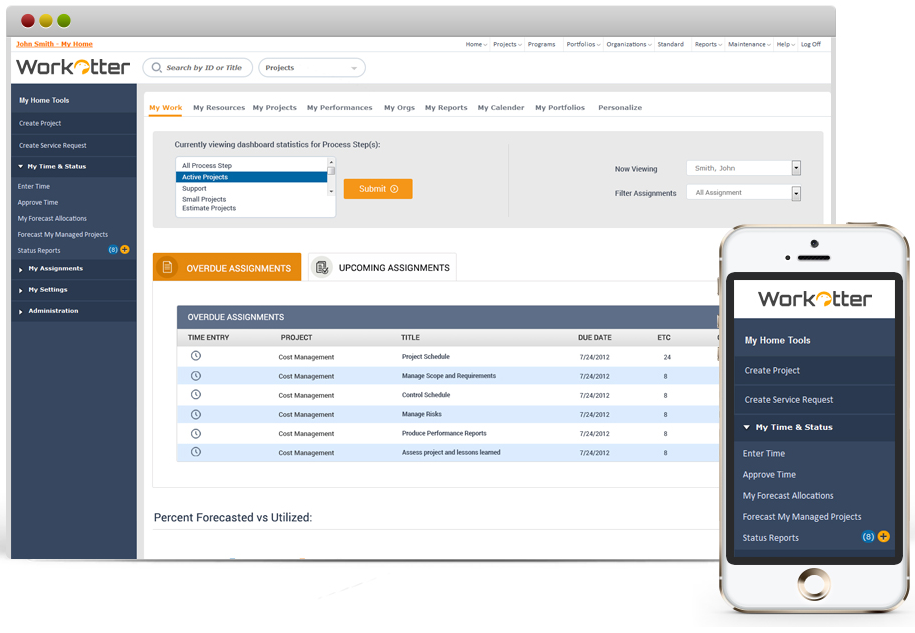
Unlocking Efficiency: The Power of CRM Integration with Wrike
In today’s fast-paced business environment, staying ahead of the curve requires more than just hard work; it demands smart work. This means leveraging the right tools and, crucially, ensuring they work together harmoniously. This is where the magic of CRM (Customer Relationship Management) integration with a powerful work management platform like Wrike comes into play. Imagine a world where your sales team, marketing department, and project managers are all singing from the same hymn sheet, armed with the same real-time information, and collaborating seamlessly. That’s the promise of a well-executed CRM and Wrike integration.
This article delves deep into the world of CRM integration with Wrike, exploring its benefits, the how-to’s, and the best practices to ensure you get the most out of this powerful combination. We’ll cover everything from the fundamental concepts to advanced techniques, equipping you with the knowledge to transform your workflow and boost your bottom line.
Understanding the Core Concepts: CRM and Wrike
Before we dive into the nitty-gritty, let’s establish a solid foundation by understanding the individual players: CRM and Wrike.
What is CRM?
CRM, or Customer Relationship Management, is more than just a software; it’s a strategy. It’s a holistic approach to managing all your company’s interactions and relationships with current and potential customers. A robust CRM system acts as a central repository for customer data, including contact information, purchase history, communication logs, and more. This allows businesses to:
- Improve Customer Service: By having a 360-degree view of each customer, support teams can provide personalized and efficient assistance.
- Enhance Sales Performance: Sales teams can track leads, manage opportunities, and close deals more effectively.
- Boost Marketing ROI: Marketers can segment audiences, personalize campaigns, and measure the effectiveness of their efforts.
- Streamline Processes: Automate repetitive tasks and free up employees to focus on more strategic initiatives.
Popular CRM systems include Salesforce, HubSpot, Microsoft Dynamics 365, and Zoho CRM.
What is Wrike?
Wrike is a collaborative work management platform designed to help teams plan, track, and manage projects and workflows. It’s a versatile tool that can be used across various departments, from marketing and product development to IT and operations. Key features of Wrike include:
- Project Planning: Create project plans, set timelines, and assign tasks.
- Task Management: Break down projects into manageable tasks, assign owners, and track progress.
- Collaboration: Communicate with team members, share files, and provide feedback.
- Reporting and Analytics: Generate reports to track progress, identify bottlenecks, and measure performance.
- Customization: Tailor Wrike to fit your specific needs and workflows.
Wrike is known for its flexibility and its ability to adapt to different project management methodologies, such as Agile and Waterfall.
The Synergy: Why Integrate CRM with Wrike?
The real power lies in combining these two platforms. Integrating your CRM with Wrike creates a unified ecosystem where customer data and project information flow seamlessly. This integration offers a wealth of benefits, including:
Enhanced Collaboration
Imagine your sales team closing a deal and instantly triggering a project in Wrike to onboard the new client. No more manual data entry, no more delays. The project team is automatically notified, and they have all the necessary information at their fingertips. This seamless handoff fosters better collaboration between sales, project management, and other relevant departments.
Improved Visibility
With integrated systems, everyone has a clear view of the customer journey. Sales teams can see the project’s progress, and project managers can access customer details, providing them with context and enabling them to tailor their approach. This transparency reduces silos and promotes a more unified approach to customer management.
Increased Efficiency
Automating tasks and eliminating manual data entry saves time and reduces the risk of errors. For example, when a new lead is created in your CRM, an automated workflow can trigger the creation of a corresponding project in Wrike, saving valuable time and effort.
Better Decision-Making
By having access to all relevant customer data and project information in one place, teams can make more informed decisions. Project managers can understand the customer’s needs and expectations, while sales teams can track project progress to ensure customer satisfaction.
Reduced Redundancy
Eliminating the need to manually transfer data between systems reduces redundancy and ensures that everyone is working with the most up-to-date information. This minimizes the risk of errors and ensures consistency across all departments.
How to Integrate CRM with Wrike: A Step-by-Step Guide
The process of integrating CRM with Wrike can vary depending on the specific CRM and the integration method you choose. However, the general steps are as follows:
1. Planning and Preparation
Before you begin, take some time to plan your integration. Consider the following:
- Define your goals: What do you want to achieve with the integration? (e.g., automate lead-to-project creation, track project progress in CRM, etc.)
- Identify the data you need to sync: Which data fields from your CRM do you need to transfer to Wrike, and vice versa?
- Choose your integration method: You can choose from native integrations, third-party integration platforms, or custom integrations using APIs.
- Assess your technical capabilities: Do you have the in-house expertise to handle the integration, or do you need to hire a consultant?
2. Choosing an Integration Method
There are several ways to integrate CRM with Wrike. Here’s a breakdown of the most common options:
- Native Integrations: Some CRM systems and Wrike offer native integrations, which are pre-built and often the easiest to set up. Check if your CRM and Wrike have a native integration available.
- Third-Party Integration Platforms: Platforms like Zapier, Integromat (now Make), and Workato provide pre-built connectors and allow you to create custom integrations without coding. These platforms are generally user-friendly and offer a wide range of integrations.
- Custom Integrations (APIs): If you need more control or have complex requirements, you can use APIs (Application Programming Interfaces) to build a custom integration. This requires technical expertise and is typically more time-consuming.
3. Setting Up the Integration
The specific steps for setting up the integration will vary depending on the method you choose. However, the general process involves:
- Connecting your CRM and Wrike accounts: You’ll need to provide your login credentials for both systems.
- Mapping data fields: You’ll need to map the data fields from your CRM to the corresponding fields in Wrike. This ensures that data is transferred correctly.
- Setting up workflows and triggers: You’ll define the actions that trigger the data transfer. For example, when a new lead is created in your CRM, you can set up a trigger to create a new project in Wrike.
- Testing the integration: Thoroughly test the integration to ensure that data is transferring correctly and that your workflows are working as expected.
4. Ongoing Maintenance
Once the integration is set up, you’ll need to maintain it to ensure that it continues to function correctly. This includes:
- Monitoring the integration: Regularly check the integration to ensure that data is syncing properly and that there are no errors.
- Updating the integration: As your CRM and Wrike systems evolve, you may need to update the integration to accommodate new features or changes.
- Troubleshooting any issues: If you encounter any issues, troubleshoot them promptly to minimize disruption.
Best Practices for Successful CRM and Wrike Integration
To maximize the benefits of your CRM and Wrike integration, consider the following best practices:
1. Start Small and Iterate
Don’t try to integrate everything at once. Start with a few key data fields and workflows, and gradually expand the integration as you become more comfortable. This approach reduces the risk of errors and allows you to fine-tune the integration based on your needs.
2. Clean Your Data
Ensure your CRM data is clean and accurate before you start the integration. Inaccurate data can lead to errors and inconsistencies in Wrike. Take the time to cleanse your data and standardize your data formats.
3. Define Clear Workflows
Clearly define your workflows and the triggers that will initiate them. This will ensure that data is transferred correctly and that everyone understands how the integration works.
4. Train Your Team
Provide training to your team on how to use the integrated systems. This will help them understand the benefits of the integration and how to leverage it to improve their productivity.
5. Document Everything
Document your integration process, including the steps you took, the data fields you mapped, and the workflows you created. This documentation will be invaluable for troubleshooting and future updates.
6. Monitor and Analyze
Regularly monitor the performance of your integration and analyze the results. This will help you identify areas for improvement and ensure that you are getting the most out of the integration.
7. Choose the Right Integration Method
Select the integration method that best suits your technical capabilities and requirements. If you don’t have in-house technical expertise, consider using a third-party integration platform.
8. Prioritize Security
Protect your data by using secure integration methods and following best practices for data security. Ensure that your integration platform complies with relevant security standards.
Specific CRM Integrations with Wrike: Examples and Considerations
While the general principles of CRM and Wrike integration remain consistent, the specifics vary depending on the CRM system you use. Let’s look at some popular examples:
Salesforce Integration with Wrike
Salesforce is a leading CRM platform, and its integration with Wrike is a powerful combination. You can:
- Sync Contacts and Accounts: Automatically sync contact and account information from Salesforce to Wrike.
- Create Projects from Salesforce Opportunities: Trigger the creation of a Wrike project when a new opportunity is created in Salesforce.
- Track Project Progress in Salesforce: Display project progress and status updates from Wrike within Salesforce.
- Use Native Integration or Third-Party Platforms: Utilize Salesforce’s AppExchange for pre-built connectors or leverage platforms like Zapier for custom integrations.
Considerations for Salesforce Integration:
- Complexity: Salesforce can be complex, so ensure you have the necessary expertise or support.
- Customization: Leverage Salesforce’s customization options to tailor the integration to your specific needs.
- Data Volume: Consider the volume of data you need to sync and ensure your integration can handle it.
HubSpot Integration with Wrike
HubSpot is a popular CRM platform for marketing and sales teams. The integration with Wrike enables you to:
- Sync Contacts and Companies: Sync contact and company information from HubSpot to Wrike.
- Create Projects from HubSpot Deals: Automatically create a Wrike project when a new deal is created in HubSpot.
- Track Project Activities in HubSpot: Push project activities and updates from Wrike to HubSpot.
- Use Native Integration or Third-Party Platforms: HubSpot offers a native integration with Wrike, or you can use third-party platforms like Zapier.
Considerations for HubSpot Integration:
- Ease of Use: HubSpot is known for its ease of use, making the integration relatively straightforward.
- Marketing Automation: Leverage HubSpot’s marketing automation capabilities to trigger project creation in Wrike.
- Deal Stages: Map HubSpot deal stages to Wrike project statuses for accurate tracking.
Microsoft Dynamics 365 Integration with Wrike
Microsoft Dynamics 365 is a comprehensive CRM platform. Integrating it with Wrike allows you to:
- Sync Contacts, Accounts, and Opportunities: Sync crucial customer data between the two platforms.
- Create Projects from Opportunities: Automatically generate projects in Wrike based on Dynamics 365 opportunities.
- Track Project Activities in Dynamics 365: Maintain a centralized view of project progress within Dynamics 365.
- Utilize Third-Party Integration Platforms: Use platforms like Zapier or Microsoft Power Automate for integration.
Considerations for Dynamics 365 Integration:
- Customization: Dynamics 365 is highly customizable, allowing for tailored integration to your specific needs.
- Integration Platform Choice: Select the integration platform that best suits your technical skills and requirements.
- Data Mapping: Pay close attention to data mapping to ensure accurate data transfer.
Zoho CRM Integration with Wrike
Zoho CRM is a feature-rich CRM solution. Integrating with Wrike offers:
- Contact and Deal Synchronization: Keep your customer data aligned across both platforms.
- Project Creation from Deals: Automate project creation when a deal is won in Zoho CRM.
- Activity Tracking: Push project updates and activities from Wrike into Zoho CRM.
- Leverage Third-Party Integrations: Use Zapier or similar platforms for seamless integration.
Considerations for Zoho CRM Integration:
- Cost-Effectiveness: Zoho CRM is known for its affordability, which can be a factor in your integration strategy.
- Workflow Automation: Utilize Zoho CRM’s workflow automation features to trigger project creation in Wrike.
- Data Security: Ensure that your integration platform and settings prioritize data security.
Troubleshooting Common CRM and Wrike Integration Issues
Even with careful planning and execution, you may encounter some issues during your CRM and Wrike integration. Here are some common problems and how to address them:
Data Synchronization Issues
Problem: Data is not syncing correctly between your CRM and Wrike, or some data fields are missing.
Solutions:
- Check your data mapping: Ensure that the data fields in your CRM are correctly mapped to the corresponding fields in Wrike.
- Verify your workflows: Make sure that your workflows are configured correctly and that they are triggered when the appropriate actions occur.
- Review your API limits: If you’re using APIs, check your API limits to ensure that you’re not exceeding them.
- Test the integration: Run tests to identify the source of the problem.
Workflow Automation Problems
Problem: Your automated workflows are not working as expected.
Solutions:
- Check your triggers: Verify that your triggers are set up correctly and that they are firing when they should.
- Review your conditions: Ensure that the conditions in your workflows are met.
- Test the workflows: Manually test the workflows to see if they are functioning as expected.
- Check for errors: Review the error logs to see if there are any error messages that can help you troubleshoot the problem.
Performance Issues
Problem: The integration is slowing down your systems or causing performance issues.
Solutions:
- Optimize your data transfer: Reduce the amount of data that is being transferred between your systems.
- Adjust your sync frequency: Reduce the frequency of data syncing to minimize the load on your systems.
- Monitor your system resources: Monitor your system resources to identify any bottlenecks.
- Consider using a dedicated integration platform: If performance is a major concern, consider using a dedicated integration platform that is designed to handle large volumes of data.
Security Concerns
Problem: You’re worried about the security of your data.
Solutions:
- Use secure integration methods: Ensure that your integration methods are secure and that they use encryption.
- Protect your API keys: Secure your API keys and never share them.
- Follow best practices for data security: Implement best practices for data security, such as regularly backing up your data.
- Review your integration platform’s security policies: Make sure that your integration platform has robust security policies in place.
The Future of CRM and Wrike Integration
The integration between CRM and Wrike is constantly evolving, with new features and capabilities being added all the time. As technology advances, we can expect to see even more seamless and sophisticated integrations in the future. Some trends to watch include:
- AI-Powered Integrations: Artificial intelligence (AI) is increasingly being used to automate tasks, predict customer behavior, and provide insights. We can expect to see more AI-powered integrations that can automatically create projects, assign tasks, and provide recommendations based on customer data.
- Enhanced Automation: Automation will continue to be a major focus, with more advanced workflows and triggers that can automate complex processes.
- Greater Customization: Users will have even more control over their integrations, with the ability to customize them to meet their specific needs.
- Improved User Experience: Integrations will become even more user-friendly, with intuitive interfaces and easy-to-use features.
- Focus on Data Privacy and Security: As data privacy becomes increasingly important, integrations will be designed with security in mind, with robust security features and compliance with relevant regulations.
The future is bright for CRM and Wrike integration, and businesses that embrace these technologies will be well-positioned to succeed in the years to come.
Conclusion: Embracing the Power of Integration
Integrating CRM with Wrike is a strategic move that can unlock significant benefits for your business. By streamlining workflows, improving collaboration, and gaining a deeper understanding of your customers, you can boost efficiency, enhance customer satisfaction, and drive revenue growth. While the initial setup may require some effort, the long-term rewards are well worth the investment.
By following the steps outlined in this article, choosing the right integration method, and adhering to best practices, you can create a powerful synergy between your CRM and Wrike systems. Embrace the power of integration, and watch your business thrive.


